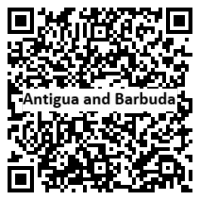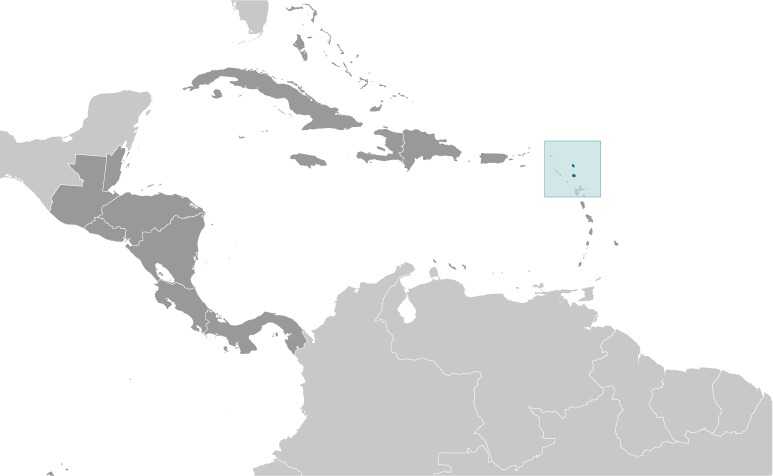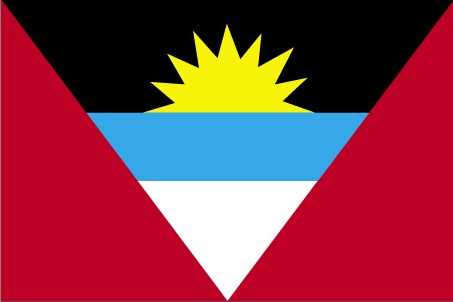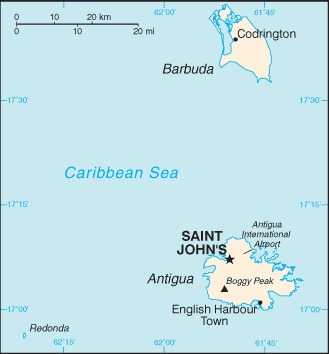Introduction
Background
The Siboney were the first people to inhabit the islands in 2400 B.C., but the Arawaks populated the islands when COLUMBUS landed on his second voyage in 1493. The islands became an independent state within the British Commonwealth of Nations in 1981.
Geography
Area
total : 443 sq km
land: 443 sq km
water: 0 sq km
Climate
tropical maritime; little seasonal temperature variation
Natural resources
NEGL; pleasant climate fosters tourism
People and Society
Population
total: 102,634
Ethnic groups
African descent 87.3%, mixed 4.7%, Hispanic 2.7%, White 1.6%, other 2.7%, unspecified 0.9% (2011 est.)
Languages
English (official), Antiguan Creole (an English-based creole)
Religions
Protestant 68.3% (Anglican 17.6%, Seventh Day Adventist 12.4%, Pentecostal 12.2%, Moravian 8.3%, Methodist 5.6%, Wesleyan Holiness 4.5%, Church of God 4.1%, Baptist 3.6%), Roman Catholic 8.2%, other 12.2%, unspecified 5.5%, none 5.9% (2011 est.)
Population growth rate
1.11% (2024 est.)
Government
Government type
parliamentary democracy under a constitutional monarchy; a Commonwealth realm
Capital
name: Saint John's
Executive branch
chief of state: King CHARLES III (since 8 September 2022); represented by Governor General Rodney WILLIAMS (since 14 August 2014)
head of government: Prime Minister Gaston BROWNE (since 13 June 2014)
Legislative branch
description: bicameral Parliament consists of:
Senate (17 seats; members appointed by the governor general on the advice of the prime minister and leader of the opposition; members served 5-year terms)
House of Representatives (19 seats; members directly elected in single-seat constituencies by simple majority vote to serve 5-year terms; in addition, 1 ex-officio seat is allocated for the attorney general and 1 seat for the speaker of the House - elected by the House membership following its first post-election session)
Economy
Economic overview
dual island-tourism and construction-driven economy; emerging “blue economy”; limited water supply and susceptibility to hurricanes limit activity; improving road infrastructure; friendly to foreign direct investment; looking at financial innovation in cryptocurrency and blockchain technologies
Real GDP (purchasing power parity)
$2.703 billion (2023 est.)
$2.603 billion (2022 est.)
$2.376 billion (2021 est.)
Real GDP per capita
$28,700 (2023 est.)
$27,800 (2022 est.)
$25,500 (2021 est.)
Agricultural products
tropical fruits, milk, mangoes/guavas, eggs, lemons/limes, pumpkins/squash, vegetables, sweet potatoes, cassava, yams (2022)
Industries
tourism, construction, light manufacturing (clothing, alcohol, household appliances)
Exports
$1.217 billion (2023 est.)
$1.111 billion (2022 est.)
$705.697 million (2021 est.)
Exports - partners
Suriname 28%, Poland 20%, Germany 13%, UK 8%, Barbados 5% (2022)
Exports - commodities
refined petroleum, ships, gas turbines, soybean meal, liquor (2022)
Imports
$1.3 billion (2023 est.)
$1.234 billion (2022 est.)
$872.781 million (2021 est.)
Imports - partners
US 57%, China 7%, Spain 4%, Brazil 4%, Finland 3% (2022)
Imports - commodities
refined petroleum, ships, engine parts, plastic products, cars (2022)
Exchange rates
East Caribbean dollars (XCD) per US dollar -
Page last updated: Wednesday, July 24, 2024




